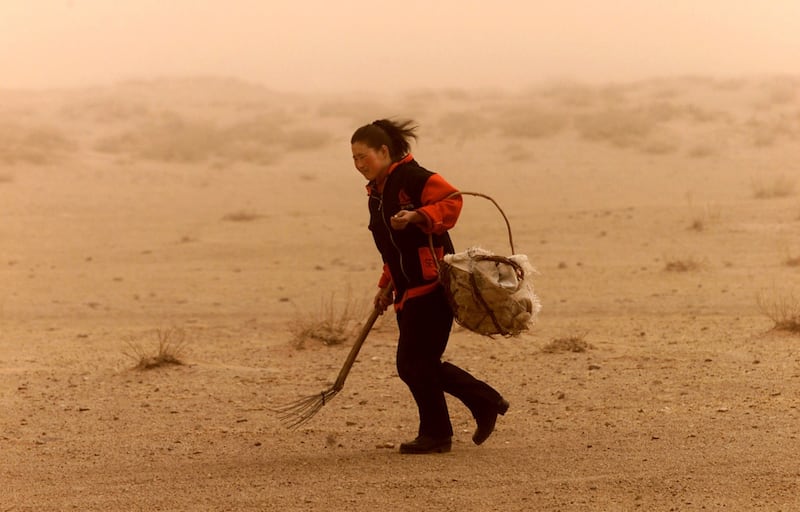As soon as Mongolia opened its borders following a period of COVID-19 isolation, Taiwanese national Cheng Li-yi boarded a plane and flew 3,000 kilometers to the grasslands. Her mission? To plant trees.
Cheng's Compassion Foundation has an ambitious target: to plant one billion trees.
"We want to make more environmental contributions to the global village," biology major Cheng told RFA from Mongolia, where sandstorms regularly turn the sky orange amid the environmental scourge of desertification.
"Seventy percent of land in Mongolia has succumbed to desertification," Cheng said, citing growing swathes of land denuded of forests, with the fragile steppe ecosystems collapsing under unsustainable pressure.
"Back then, there were trees everywhere, but now they're all gone," she recalled of a trip she made to mountains near Ulaanbaatar back in 1990.
Deforestation means that when torrential rains fall, floods gather quickly, washing much of the topsoil with it. A recent flash flood wrought havoc with Cheng's tree-planting project.
"The torrential rain fell for about two hours non-stop, and flash floods came immediately, breaking through the [perimeter] wall in several places," Cheng said.
"It turns out that there used to be a river passing through the area," she said. "When it rains, because there are no more trees in the upper valleys, the water immediately gets funneled down the old river bed."
"When it doesn't rain, there's no water -- these are the consequences of a lack of forest regulation," Cheng said.
![Sea buckthorn [left] is a native shrub in Mongolia that develops an extensive root system that hinders erosion. Tree saplings [right] are planted with water pots that stabilize their water supply. Credit: Compassionate Foundation](https://www.rfa.org/resizer/v2/YPA4DYBRWIHYJCFRS4KWPRDUT4.jpg?auth=e957550cbe661b0c881ce91489571e039abac86ba21e036211e4a814067ca936&width=800&height=339)
Overgrazing
The land has also come under relentless pressure from overgrazing by 60 million head of livestock and extractive industries like mining.
But it's not enough just to dig some holes and put saplings in them.
Tree-planting is a precise art that needs a localized strategy in tune with local conditions, as the authorities in the Chinese region of Inner Mongolia found to their cost after sinking huge sums into planting poplars, only to find the species didn't thrive there.
"There are many strains in the wilderness, which have both economic and health benefits, that can propagate from underground stems -- these are good species for afforestation," Cheng said.
Among the native species Cheng's project favors are sea buckthorn and Siberian elm, which already cover an area equivalent to 10 soccer pitches at the project, where water towers, wells, irrigation pipelines, yurts and other facilities have sprung up alongside the saplings.
Cheng's trees are planted in biodegradable reservoirs soaked in water, keeping the seedlings watered for around a month, cooling the root ball, and protecting the vulnerable seedlings from wind and sandstorms.
"The [reservoirs] gradually decompose, taking care of the trees in the process," Cheng said, noting that current hose watering methods used in China generate too much plastic waste to be sustainable.

Livestock eat trees
But there is another hazard -- livestock.
"It's quite normal for livestock to roam freely and eat trees in Mongolia," Cheng said. "So we are working with Renzhou Social Enterprise to develop a tree sleeve made of the same material as the water reservoirs, protecting [the seedlings] from being eaten by animals."
While the Mongolian government is pressing ahead with its own tree-planting plan, which aims to plant one billion trees by 2030, Cheng said many of the plantations are in mining districts, and that many fail to thrive in the absence of sufficient watering after planting.
Cheng herself is thriving on the work, however.
"We are taking the initiative to change the environment through hard work, rather than passively enduring extremes," Cheng said. "We have to work hard, take this opportunity; there's no other option."
"I think it's better than becoming a climate refugee."
Translated and edited by Luisetta Mudie.
